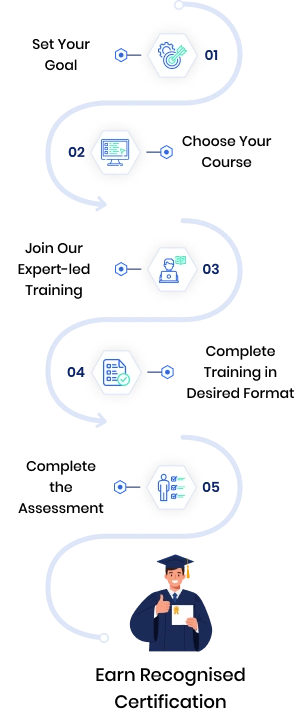Course Overview O v e r v i e w
- Course Overview
- Course Outline
- What’s Included
- What You’ll Learn
- Exam Details
PRINCE2 Agile® Foundation and Practitioner Overview
PRINCE2 Agile® is one of the most flexible project management approaches, combining the governance of PRINCE2® with the responsiveness of agile delivery methods. The Foundation & Practitioner levels together provide a complete understanding of how to blend structure with adaptability, enabling professionals to manage projects with control while embracing change and innovation across industries of every scale.
Being formally trained in PRINCE2 Agile® offers significant advantages for career growth and organisational performance. Certified professionals are equipped to balance project governance with agile practices, ensuring stakeholder satisfaction, faster delivery, and value-driven outcomes. With this dual expertise, delegates gain confidence to lead projects that remain adaptable to shifting requirements while staying aligned with strategic business goals.
At Training Deals, we make learning PRINCE2 Agile® accessible, affordable, and results-focused. Our expert trainers bring hands-on industry knowledge, ensuring the course content is practical and relevant to today’s project environments. With flexible learning formats, competitive pricing, and ongoing learner support, Training Deals is the trusted choice for professionals seeking PRINCE2 Agile® Foundation & Practitioner Certification.

PRINCE2 Agile® Foundation and Practitioner Outline
Module 1: Understand Key Concepts Relating to Projects and PRINCE2
Recall the PRINCE2 Principles
Continued Business Justification
Learn from Experience
Defined Roles and Responsibilities
Manage by Stages
Manage by Exception
Focus on Products
Tailor to Suit the Project Environment
Explain the Purpose of the PRINCE2 Themes
Business Case
Organisation
Quality
Plans
Risk
Change
Progress
Explain the Purpose of the PRINCE2 Processes
Starting Up a Project
Initiating a Project
Directing a Project
Controlling a Stage
Managing Product Delivery
Managing a Stage Boundary
Closing a Project
Module 2: PRINCE2 Agile Behaviours
Explain the PRINCE2 Agile Behaviours
Transparency
Collaboration
Rich Communication
Self-Organisation
Exploration
Module 3: PRINCE2 Agile Guidance for Themes and Processes
Explain the PRINCE2 Agile Guidance for Each Theme
Business Case
Organisation
Quality
Plans
Risk
Change
Progress
PRINCE2 Agile Guidance for Each Process
Starting Up a Project
Initiating a Project
Directing a Project
Controlling a Stage
Managing Product Delivery
PRINCE2 Agile Guidance for Tailoring the Following PRINCE2 Management Products
Business Case
Checkpoint Report
Highlight Report
Project Brief
Project Initiation Documentation
Project Product Description
Work Package
What to Fix and What to Flex, Including Setting Tolerances and the Five Targets
Fix and Flex Tolerances
Be on Time and Hitting Deadlines
Protect the Level of Quality
Embrace Change
Keep Teams Stable
Accept That the Customer Doesn’t Need Everything
Module 4: Understand the Agile Ways of Working, Key Terms and Techniques
Recall the Definition of the Following Agile Terms
Backlog (Sprint, Release & Product)
Benefit (Value)
Epic
Information Radiator
Spike
Stand-Up Meeting
Timebox (Sprint, Release)
Velocity
Waterfall Methodology
Explain Key Agile Concepts and Techniques
Scrum
Lean Start-up (Incl. MVP)
Retrospectives
User Stories (Incl. Definition of ‘Ready’ and ‘Done’)
Workshops
Burn Charts
Agile Estimation (Points and T-Shirt Sizing)
Working Agreements
Module 5: Understand the Focus Areas in an Agile Context
Explain the PRINCE2 Agile Focus Areas
Agilometer
Requirements
Rich Communication
Frequent Releases
Module 6: Understand the Basic Concepts of Common Agile Ways of Working
Differences Between Projects and BAU (Business as Usual)
Agile and Its Common Approaches, How and Why Agile Approaches Have Developed and Where They Are Used
History of Agile, Its Contrast to the Waterfall Way of Working and How the Agile Manifesto Fits In
Different Levels of Agile Maturity and Well-Known Agile Frameworks
Behaviours, Concepts and Techniques That Characterise Agile
PRINCE2 Agile View of ‘Agile’
Kanban, the Kanban Method and Its Six General Practices, Including the Use of Cumulative Flow Diagrams (CFDs)
Core Concepts of Lean Start-up
Use of Workshops
How to Transition to Agile
Scrum Theory and Explain the Nature of the Scrum Team, Scrum Events, Scrum Artifacts and Sprints
Module 7: Purpose and Context for Combining PRINCE2® and the Agile Way of Working
Complementary Strengths of PRINCE2 and the Agile Way of Working
Who Can Benefit from Using PRINCE2 Agile and in What Contexts/Situations
Make-Up of PRINCE2 Agile
Frameworks
Behaviours
Concepts
Techniques
Focus Areas
Eight ‘Guidance Points’
How PRINCE2 Controls and Governance Can Enable Agile to Be Used
What a Typical PRINCE2 ‘Project Journey’ Looks Like in an Agile Context
Module 8: Be Able to Apply and Evaluate the Focus Areas to a Project in an Agile Context
Purpose and Use of the Agilometer Throughout a Project
Six Sliders Used on the Agilometer, Explain Their Significance and How to Improve Them
Detail Requirements Terminology, Decomposition and Prioritisation, Including MoSCoW and Ordering
How Requirements Prioritisation Is Used
Rich Communication Focus Area, Its Importance and Its Key Techniques
How to Manage Frequent Releases and the Benefits of ‘Failing Fast’
Module 9: Be Able to Fix and Flex the Six Aspects of a Project in an Agile Context
How to Use the ‘Hexagon’ in Relation to the Six Aspects of Project Performance
Use of Tolerances in Terms of What to ‘Fix’ and What to ‘Flex’ in Relation to the Six Aspects of Project Performance
Detail Each of the Five Targets That Underpin the Use of the Hexagon
Why the ‘Fix and Flex’ Approach Is Good for the Customer
Module 10: Be Able to Apply or Tailor the PRINCE2 Principles, Themes, Processes and Management Products to a Project in an Agile Context
Detail the Five PRINCE2 Agile Behaviours
Agile Incorporation in All PRINCE2 Processes and Themes, with Contextual Variations
Roles of Scrum Master and Product Owner
Adjusting Roles and Options for Team Organisation in a Project
Make-up of a Typical Delivery Team
Servant Leadership, Its Use and Importance
Defining Working Agreements
Quality Setting Techniques: ‘Definition of Done’ and Acceptance Criteria
Quality Testing, Checking and Management Techniques
Approaches to Planning and Typical Planning Techniques
Approaches to Risk and How Agile Concepts Mitigate Typical Risks
Blending PRINCE2 with Agile to Control and Minimise Change Impact
Empowered Self-organising Teams Handling Change Within Set Tolerances
Common Feedback Loops and Their Importance
Progress Monitoring: ‘Work in Progress’ Boards, Burn Charts, Info Radiators
Agile Techniques Applicable to PRINCE2 Processes, Including Cynefin
Flexing the ‘Direct a Project’ Stage and Collaborative Working Benefits
‘Manage by Exception’ with Focus on Empowerment and Deliverables
Why PRINCE2 ‘Stages’ May Not Be Required, with Timeboxes and Scrum of Scrums
Typical Output Mechanisms in ‘Controlling a Stage’ and ‘Managing a Stage Boundary’

What’s included in this PRINCE2 Agile® Foundation and Practitioner?
- Expert-led Training Sessions by Certified Instructors
- Official PRINCE2® Foundation & Practitioner Exams
- Digital Delegate Pack
- 24/7 Tutor support
- Interactive course
- Exercise files
- Scenario-based learning
What You’ll Learn in this Course
This course takes you from understanding the fundamentals of PRINCE2® and agile methods to applying advanced practices that blend control with flexibility. Each stage of the journey equips you with the skills and confidence to manage adaptive projects successfully.
Learn the core principles of PRINCE2® and how they integrate with agile practices
Learn to balance governance with flexibility for changing project requirements
Learn to manage risks, quality, and stakeholder expectations in agile environments
Learn to apply agile concepts such as Scrum, Kanban, and Lean alongside PRINCE2®
Learn to deliver value quickly while maintaining alignment with business goals
Learn how to lead projects that thrive in fast-paced, dynamic industries

PRINCE2 Agile® Foundation Exam Information
The PRINCE2 Agile® Foundation Exam is a multiple-choice assessment designed to evaluate your understanding of the PRINCE2 Agile® methodology. As the entry-level certification in the PRINCE2 Agile® suite, it is accessible to individuals with a basic knowledge of project management. The exam structure is outlined below.
Question Type: Objective Testing
Total Questions: 50
Total Marks: 50 Marks
Pass Marks: 55%

Our Upcoming Batches
Request More Information

Corporate Training
Elevate your workforce with expert-led corporate training that enhances skills, boosts productivity, and aligns teams with your business goals.

Individuals Training
Unlock personal growth and sharpen professional skills with tailored training designed to build your confidence and career success.
Your Path to Professional Recognition
Our path is designed to guide you through each stage with clarity, support and practical learning, helping you achieve your goals with confidence.

Step Forward with Globally Recognised Certification
A recognised certification is more than a credential. It’s proof of your commitment to professional excellence, providing you with the credibility, confidence, and global reach to advance your career in exciting new directions.
Globally Certified Professionals Over Time
Career Growth
81%Certified professionals reported receiving a promotion after earning their certification.
Global Opportunities
89%Certified professionals experienced access to new career opportunities, including leadership roles and global positions.
Not able to find what you are looking for
Our experts will guide you to the right course from thousands worldwide: tailored to your goals.
Frequently Asked Questions
PRINCE2 Agile® combines the governance of PRINCE2® with the flexibility of agile practices. It enables teams to deliver projects with control while adapting quickly to changing requirements.
It equips project managers with the ability to balance structure and adaptability. This ensures projects remain aligned with business goals while responding effectively to customer and market needs.
Yes, PRINCE2 Agile® is designed to work in any industry. Its combination of governance and agile delivery makes it suitable for IT, finance, healthcare, construction, and many other sectors.
By integrating agile techniques like Scrum, Kanban, and Lean within a structured framework, PRINCE2 Agile® ensures faster delivery, stakeholder satisfaction, and measurable business value.
The Foundation level introduces the core principles of PRINCE2® and agile practices. The Practitioner level focuses on applying these methods in complex, real-world project environments.
What Our Customers Say About Us
 Matthew Sullivan
HR Business Partner
Matthew Sullivan
HR Business Partner
Our HR team registered for the Change Management Foundation & Practitioner Training Course, and it couldn’t have been more valuable. The team gained practical frameworks to guide employees smoothly through transitions with confidence.
 Olivia Barrett
Operations Manager
Olivia Barrett
Operations Manager
Our operations staff completed the Lean Six Sigma Green Belt Training Course, and it has been transformative. We can now identify inefficiencies quickly, and the tools we learned are already improving performance across the team.
 Benjamin Foster
Product Manager
Benjamin Foster
Product Manager
Our product team took part in the Agile Project Management Foundation & Practitioner (AgilePM®) Training Course, and the difference is remarkable. We’re now more adaptive, collaborative, and efficient in managing change.
 Lucy Harper
IT Support Lead
Lucy Harper
IT Support Lead
Our IT support unit attended the ITIL® 4 Foundation Training Course, and the results have been impressive. Processes are smoother, collaboration has improved, and the team finally speaks a common language of service management.
 Edward Clarke
Programme Manager
Edward Clarke
Programme Manager
We joined the PMP® Certification Training Course as a leadership group, and it was outstanding. The trainer made every concept practical, and the exam preparation resources helped the whole team feel ready to tackle complex projects.
 Amelia Rhodes
Project Officer
Amelia Rhodes
Project Officer
Our project office completed the PRINCE2® Foundation & Practitioner Training Course, and it has brought real clarity to how we manage projects. The trainer’s examples were excellent, and the team now follows a structured approach with confidence.


























